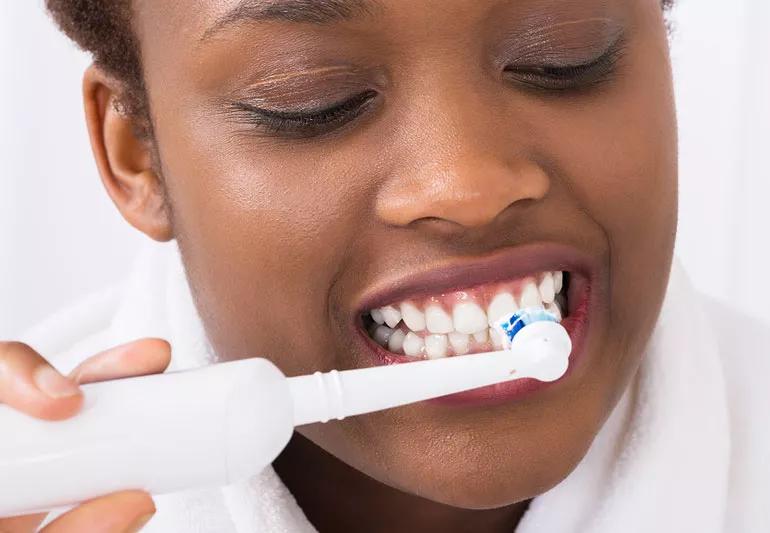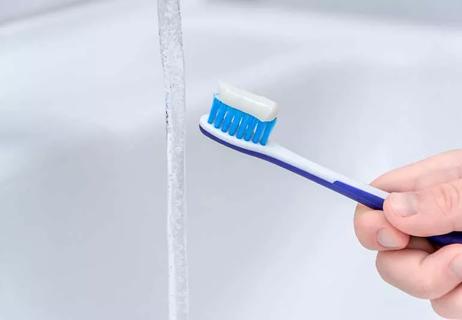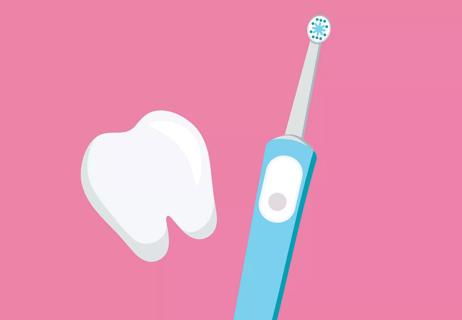It’s all about choosing the right toothbrush and hitting a 45-degree angle

Brushing your teeth is such a commonplace activity that you probably don’t think much about your technique. But as it turns out, technique matters — a lot! Brushing your teeth the right way can keep them clean enough to ward off cavities and other dental issues, while brushing them incorrectly can actually damage them.
Advertisement
Cleveland Clinic is a non-profit academic medical center. Advertising on our site helps support our mission. We do not endorse non-Cleveland Clinic products or services. Policy
Periodontist Sasha Ross, DMD, MS, explains why it’s so important to use the right brushing technique — and what, exactly, that technique entails.
Have you ever used a wet paper towel to wipe down your kitchen counter instead of spraying it down with disinfectant? Yeah, it’s kinda like that. A quick swipe over your teeth just won’t do the trick.
When you brush your teeth the right way, you get your teeth as clean as you possibly can, which does wonders for your oral health. “Taking care of your oral health can impact your overall health,” Dr. Ross says. “And beyond that, feeling confident about your smile goes so far, both socially and professionally.”
Here’s what you need to know about the correct way to brush:
Advertisement
You might not have spent much time picking out your toothbrushes in the past, but now’s the time to start. In particular, pay attention to the kind of bristles you buy. Toothbrushes and electric toothbrush heads come in soft-, medium- and hard-bristle varieties.
“Hard toothbrushes are the best at removing plaque, but they also remove part of your tooth structure,” Dr. Ross explains.
In other words, they can’t differentiate between the bad stuff (plaque) and the good stuff (your teeth and gums themselves). Hard bristles can erode your tooth enamel, which may lead to cavities, and wear away at your gum tissue, which can cause gum recession.
“They’re too abrasive,” she adds, “so it’s best to stay away from them and stick with soft or sensitive bristles instead.”
The toothpaste aisle is full of options: Ones that claim to support gum health, decrease sensitivity, whiten your teeth or prevent cavities. But Dr. Ross says that for the most part, their ingredients are the same.
“To treat and prevent cavities, the most important thing is that you use a toothpaste that’s fluoridated,” she says. “You should also stay away from toothpastes with a lot of baking soda, which are very abrasive.”
“Electric toothbrushes are what I recommend, as studies show that they do a better job than manual ones,” Dr. Ross advises.
A 2021 study found that electric toothbrushes removed more plaque from molars than manual toothbrushes did, though it showed no difference in removing plaque from incisors. And a study from 2022 found that after 12 weeks of using an electric toothbrush, 86% of participants showed reduced plaque and gum bleeding.
There are two main brands of electric toothbrushes on the market today:
“Each company says their technology cleans better than the other one, but the truth is that we don’t have any recent studies to confirm one way or another,” Dr. Ross says.
You should brush your teeth two times a day for two minutes at least one of the times. It’s easy to keep track of that timeframe if you’re using an electric toothbrush, as most of them have a timer that tells you when your two minutes are up.
Advertisement
But you may need to brush more than twice a day, depending on your eating habits. “If you’re eating multiple small meals throughout the day, you need to be brushing your teeth more often to prevent cavities,” Dr. Ross warns. And don’t forget to floss!
Advertisement
Learn more about our editorial process.
Advertisement

You might have a sensitive gag reflex — but gagging while brushing can also be a result of certain medical conditions

An old, worn toothbrush is a hazard to your teeth and gums and a breeding ground for germs and bacteria — replace it every three to four months at least

Done correctly, daily flossing can help keep your teeth and gums healthy

Bloody gums after flossing usually signal a buildup of plaque, tartar and bacteria

A variety of products can be effective at removing stains on teeth

Despite unfounded theories, fluoride has the power to make your teeth stronger

Studies show they do a better job than manual brushes at removing plaque and debris

This tool is an add-on to your regular brushing and flossing habits, not a replacement for them

Babies can get congested easily, but you can calm their cough by keeping them hydrated, using nasal drops and running a humidifier

Weight loss may cause loose, sagging skin and muscle loss to your rear

Several conditions, like vitiligo and fungal infection, can cause a loss of pigmentation, leading to white spots or patches on your skin